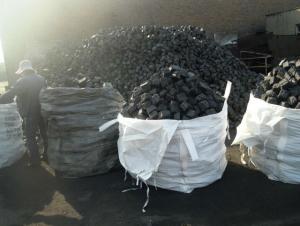When we talk about the impact of graphite electrode size on performance, it’s like discussing the role of a key player in a soccer match. Just as a player’s size can influence their performance on the field, the size of a graphite electrode can significantly affect its performance in various applications. But let’s dive into this topic with a bit of a personal touch, shall we?
Graphite electrodes are the unsung heroes of many industrial processes. They are versatile, reliable, and can withstand high temperatures. But did you know that their size plays a crucial role in determining their efficiency and effectiveness? It’s like choosing the right size of shoes for a long hike; it makes all the difference in the world.
In the world of metallurgy, for instance, graphite electrodes are used for electric arc furnaces (EAF) to melt scrap metal and transform it into new steel. The size of these electrodes can influence the melting rate, energy consumption, and even the quality of the final product. It’s like having a powerful engine in your car; the bigger the engine, the more power you have at your disposal, but it also consumes more fuel. Similarly, larger electrodes can melt more metal at a faster rate, but they also require more energy.
On the other hand, smaller electrodes have their advantages too. They are more maneuverable and can be used in applications where precision is key. Think of a painter’s brush; a smaller brush allows for more detailed work, while a larger one is better for covering larger areas quickly. In the same way, smaller electrodes can be used for more intricate tasks that require a delicate touch.
But it’s not just about the size; the shape of the graphite electrode also matters. Different shapes can be used for different purposes. For example, a cylindrical electrode is ideal for general use, while a tapered electrode can be more effective for specific applications that require a gradual increase in current density. It’s like having a toolbox with various tools; each tool has its purpose and is best suited for a particular job.
Now, let’s talk about the impact of electrode size on the environment. Larger electrodes may seem more efficient at first glance, but they can also contribute to more energy consumption and, consequently, a larger carbon footprint. Smaller electrodes, while they may not melt as much metal at once, can be more energy-efficient and environmentally friendly in the long run. It’s like choosing between a gas guzzling SUV and a fuel-efficient hybrid; the choice can have a significant impact on your ecological footprint.
Moreover, the size of the graphite electrode can also affect its lifespan. Larger electrodes may last longer due to their greater mass, but they can also be more prone to breakage due to their size and weight. It’s like a heavy tree that’s more likely to fall during a storm compared to a smaller, more flexible one. Smaller electrodes, while they may not last as long, can be replaced more frequently and at a lower cost, making them a more economical choice in the long term.
In conclusion, the size of a graphite electrode is a critical factor that can influence its performance in various ways. It’s not just about choosing the biggest or the smallest; it’s about finding the right balance that suits your specific needs and applications. Whether you’re in the steel industry, the automotive sector, or any other field that utilizes graphite electrodes, understanding the impact of electrode size on performance is essential for optimizing your processes and achieving the best results.
So, the next time you’re selecting a graphite electrode, think about it as you would when choosing a tool for a job or a player for your team. Consider the size, the shape, the energy efficiency, and the environmental impact. After all, every detail counts when it comes to performance, and the right choice can make all the difference in your industrial endeavors.

